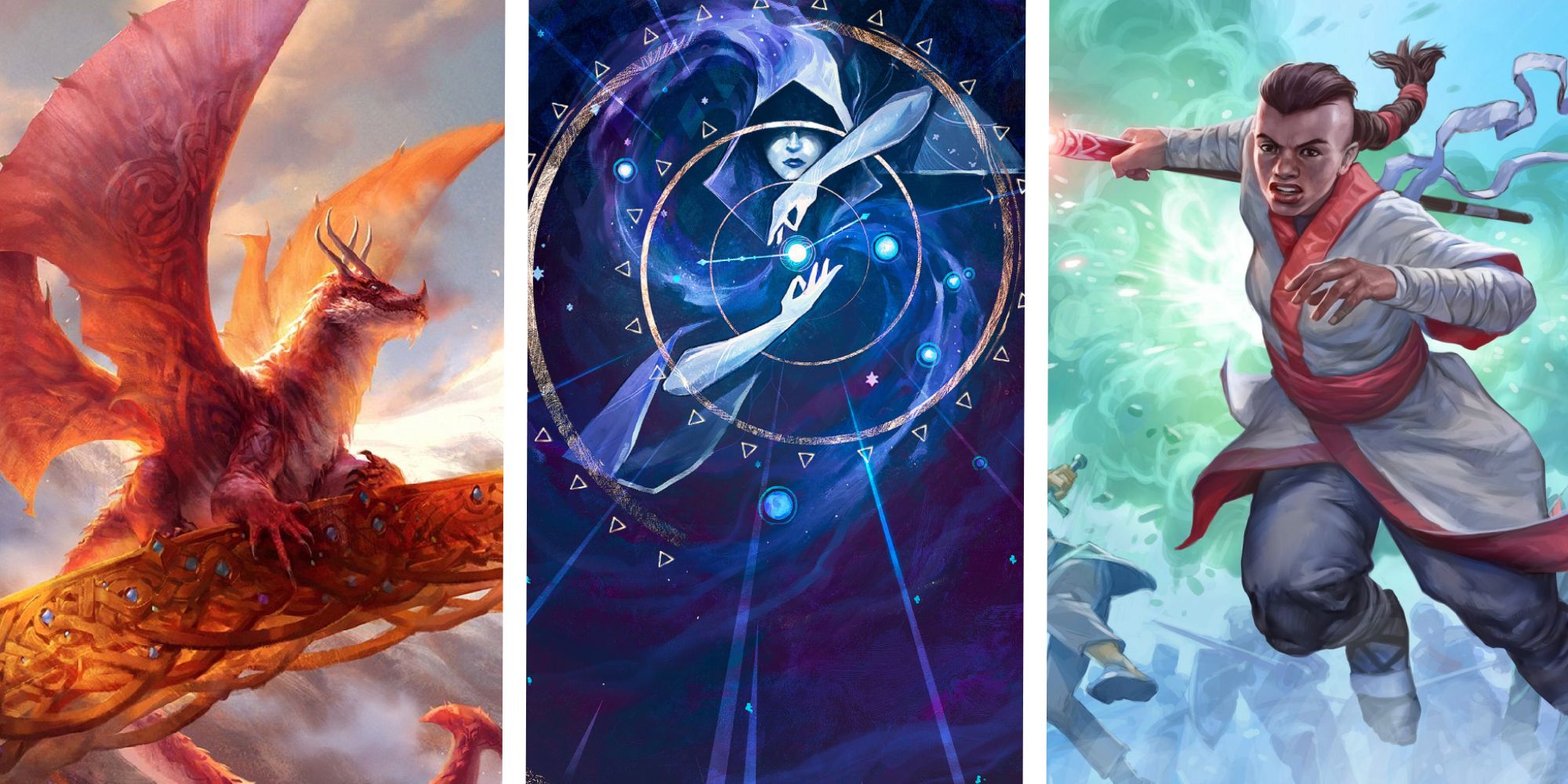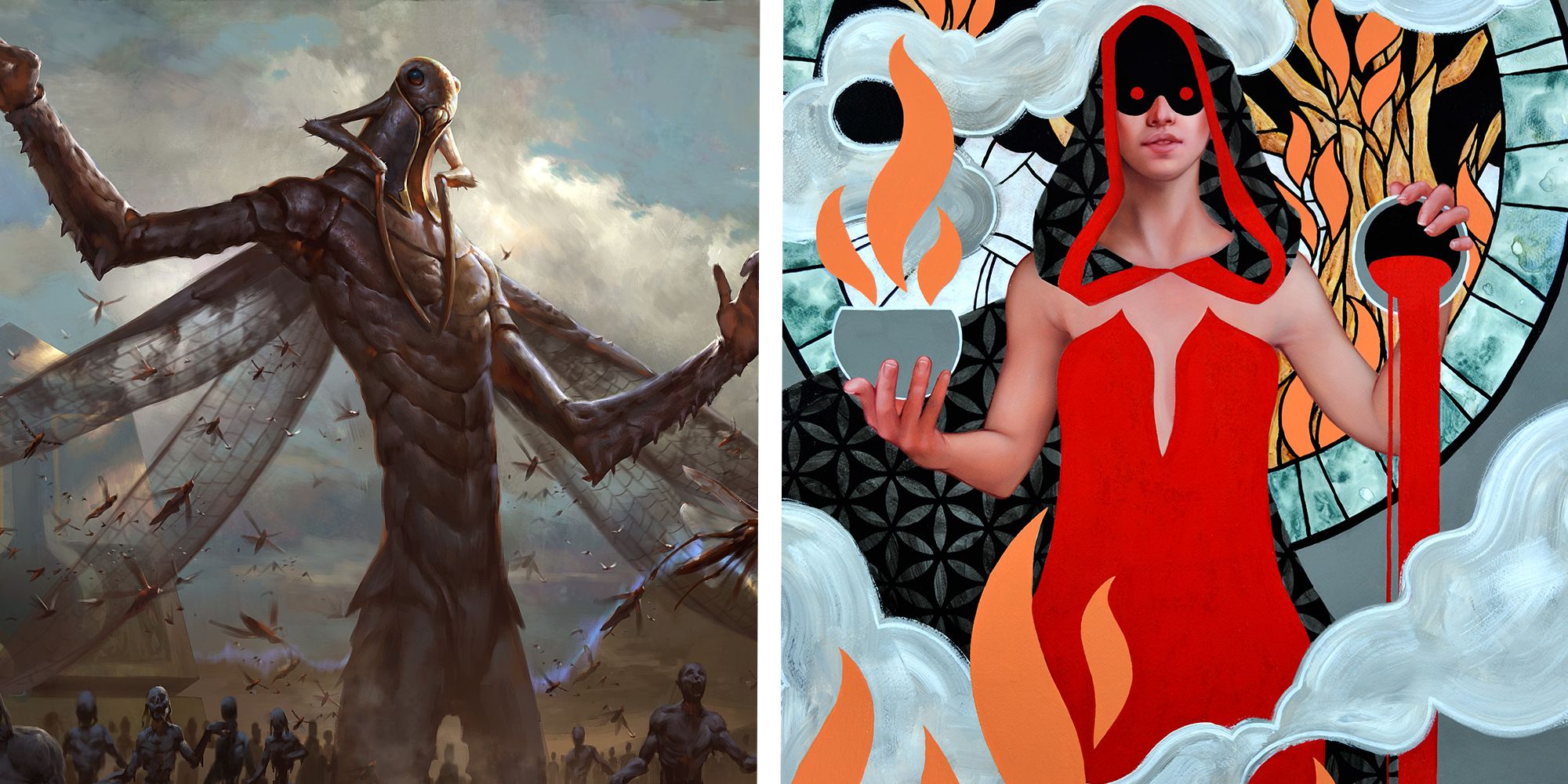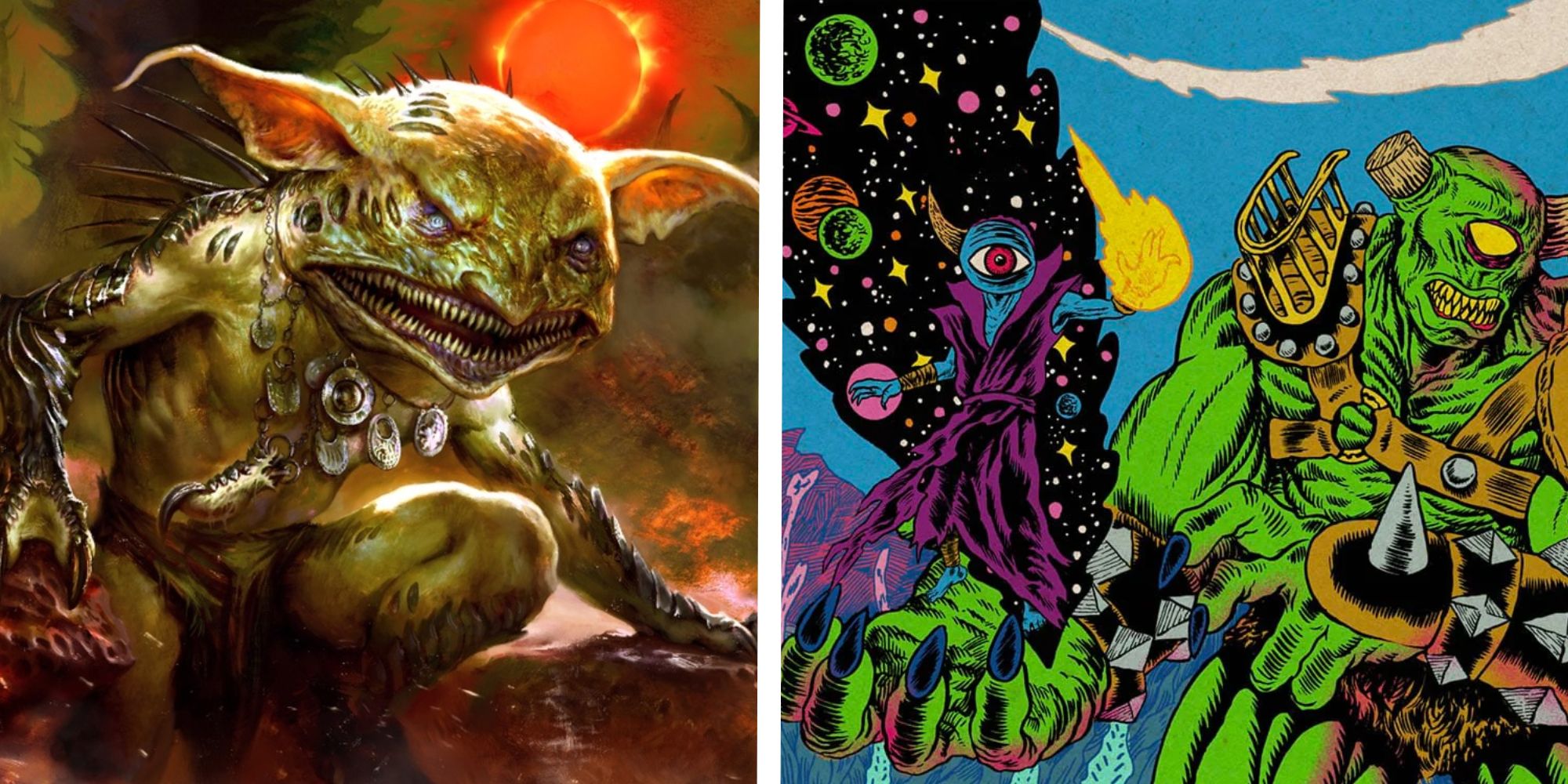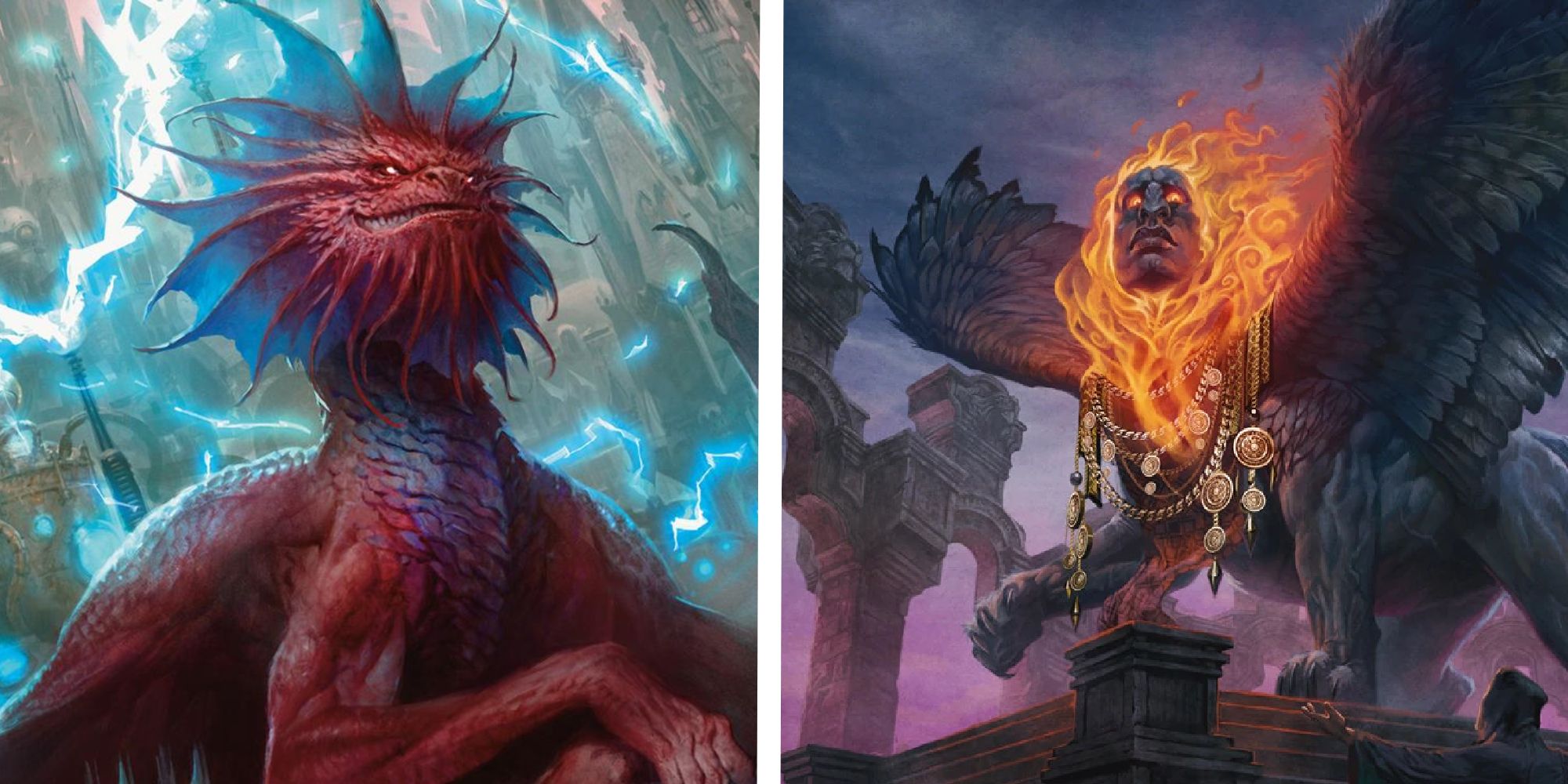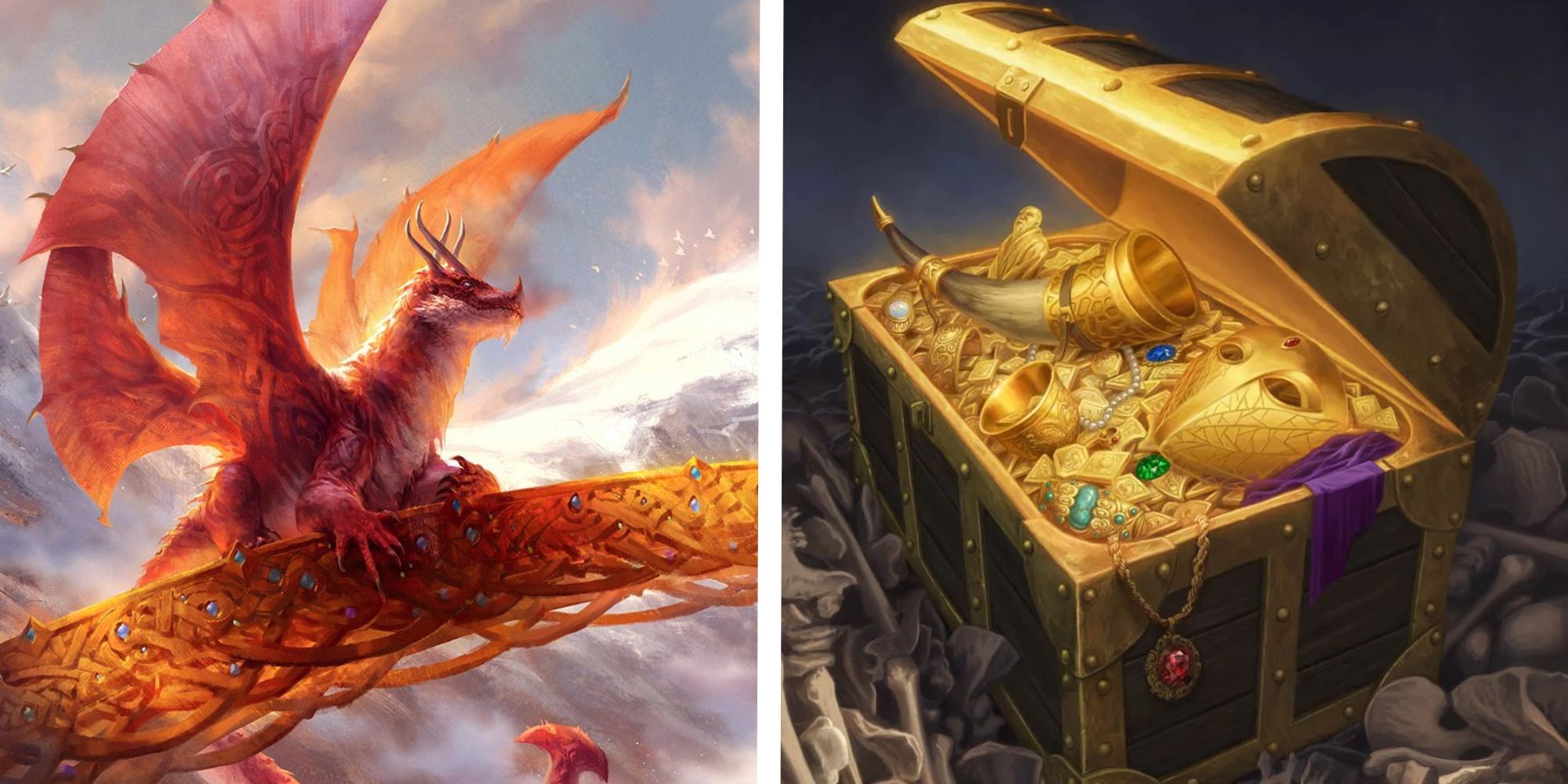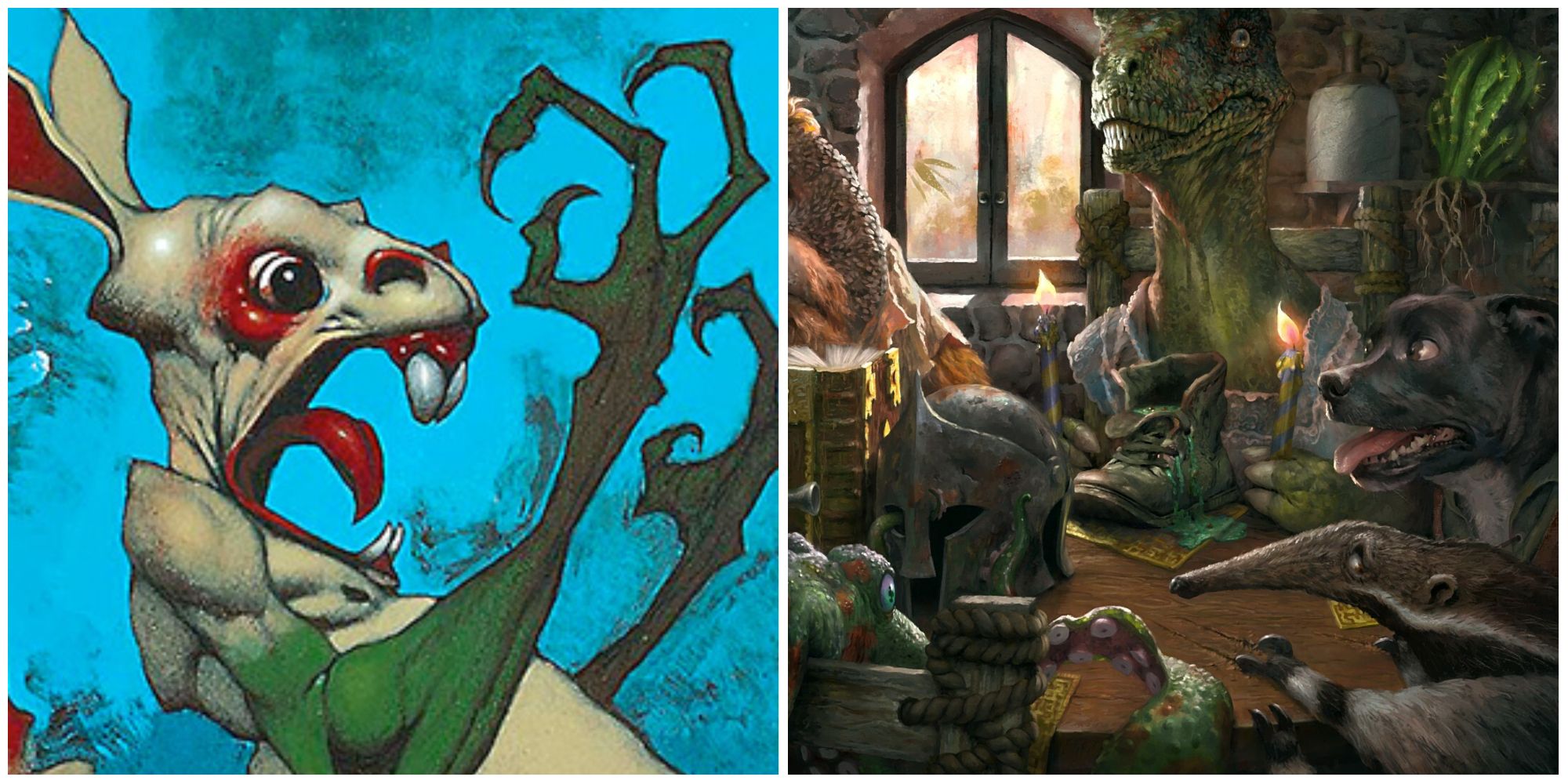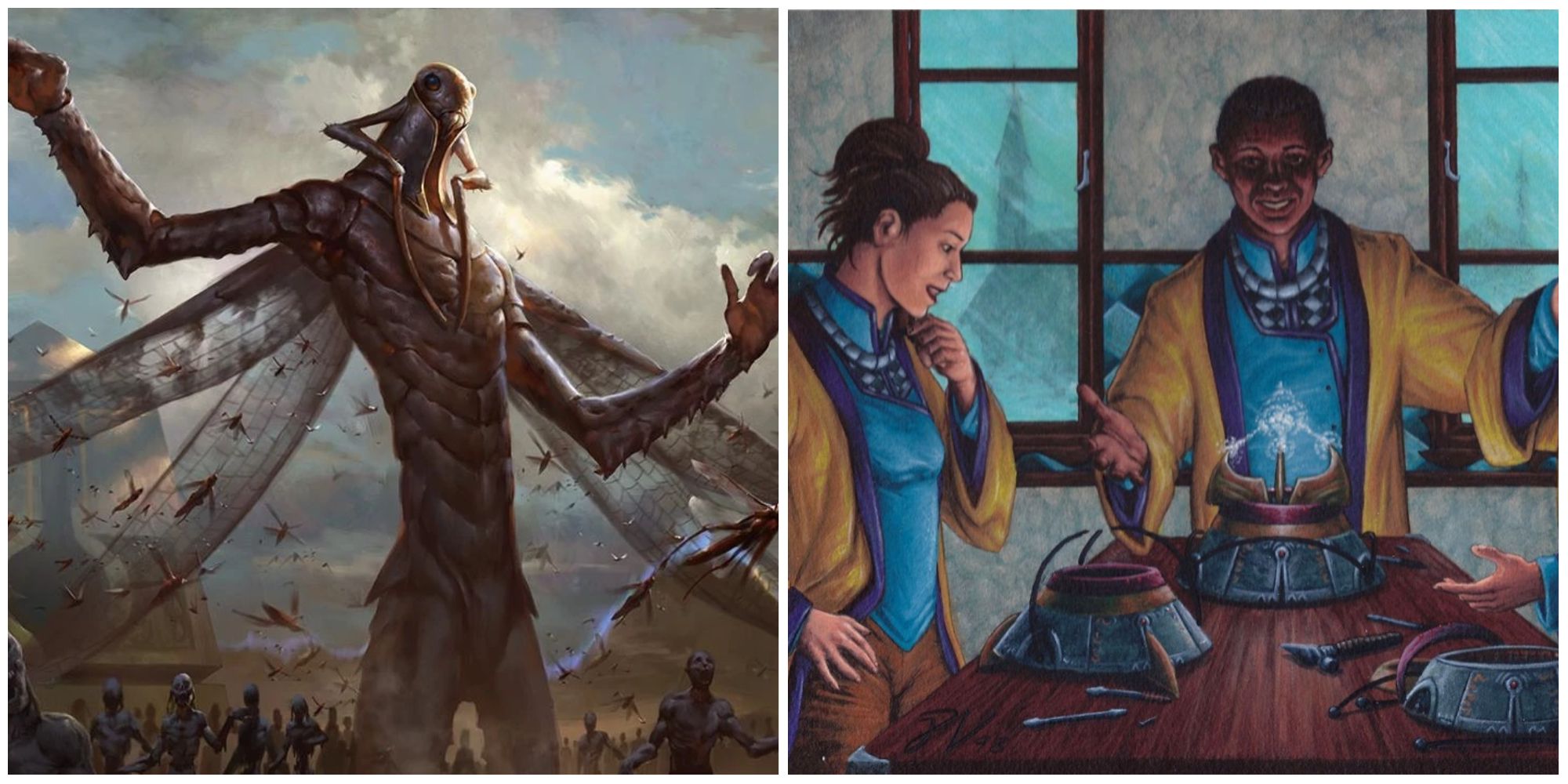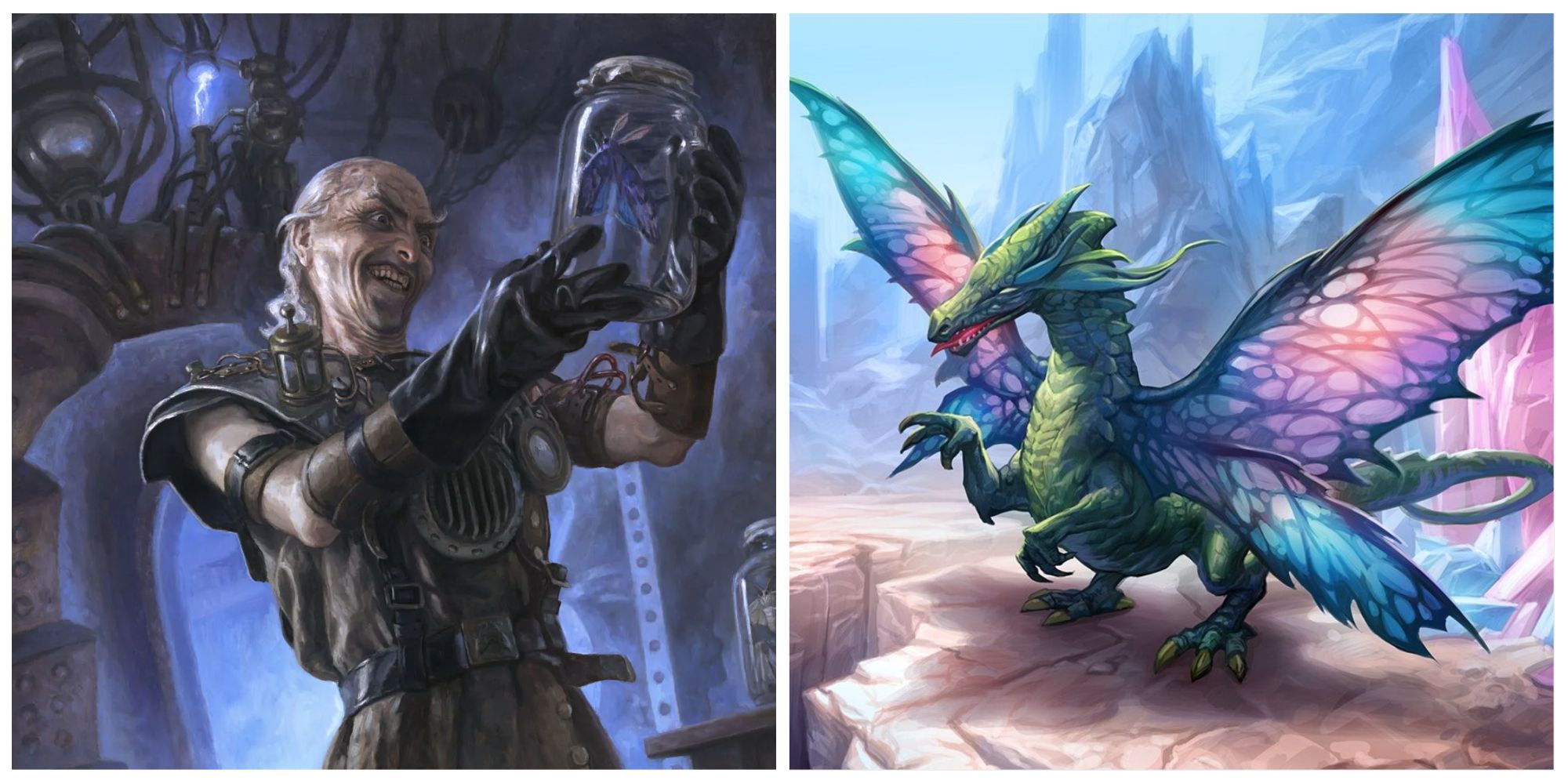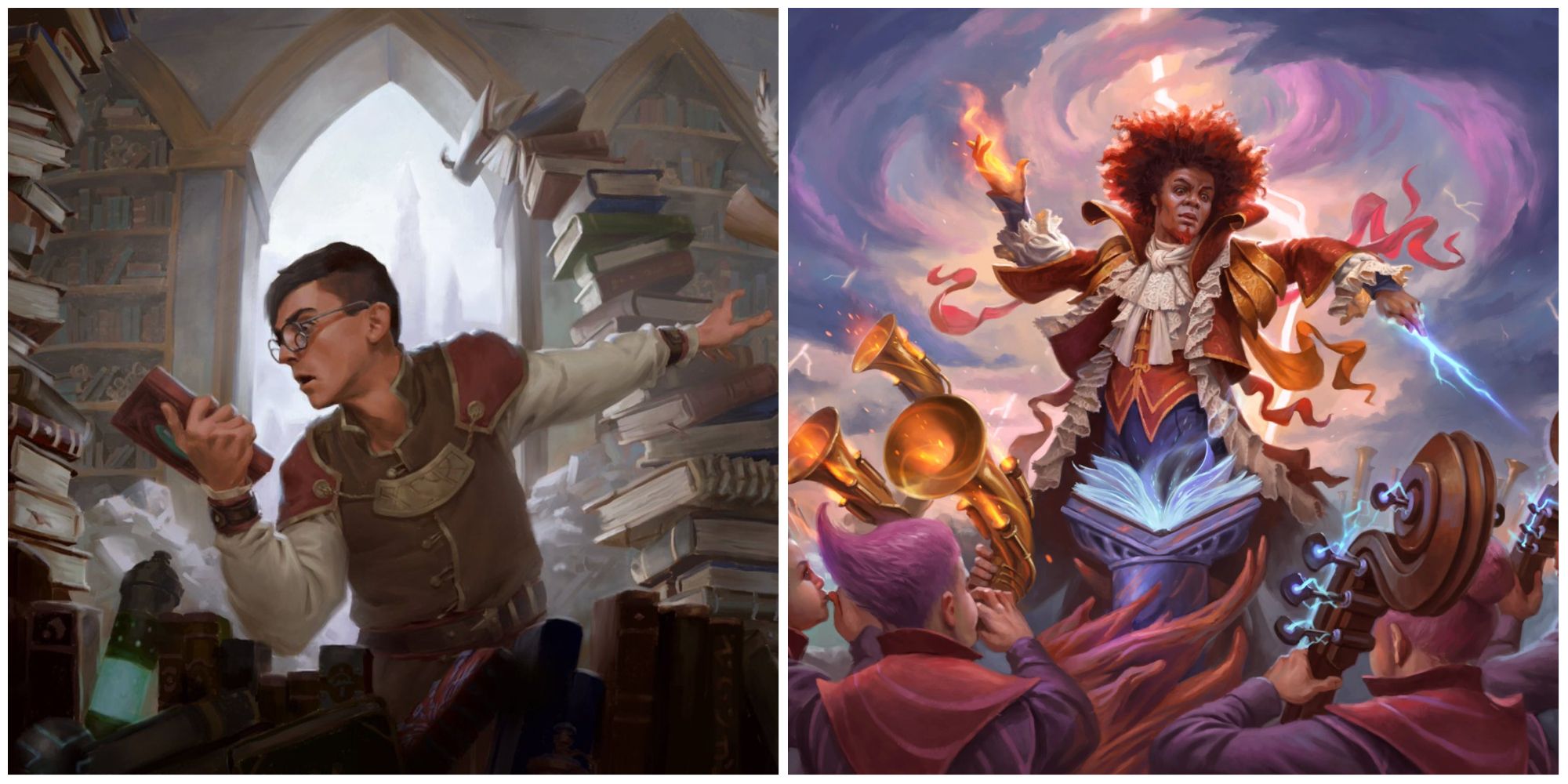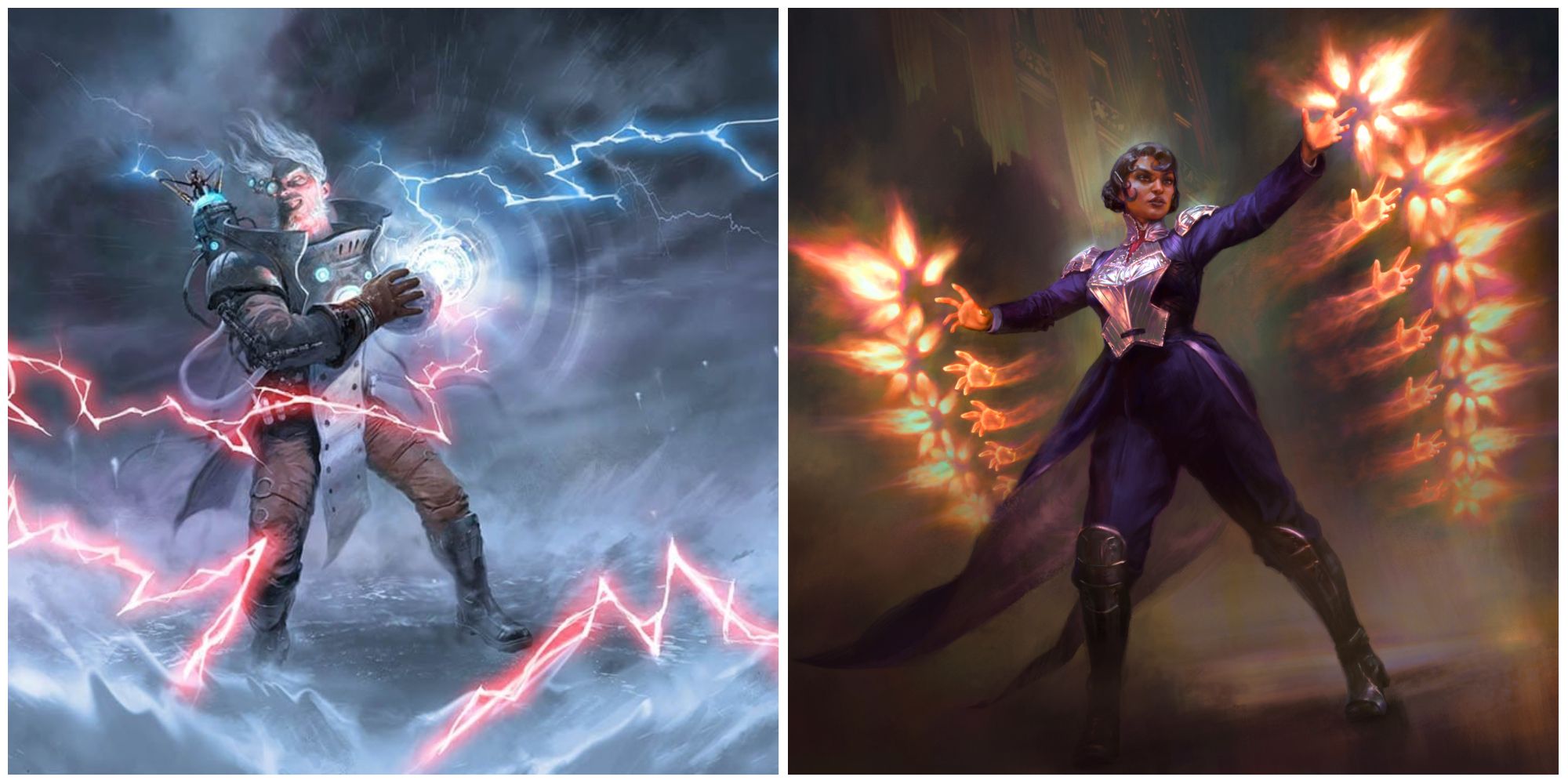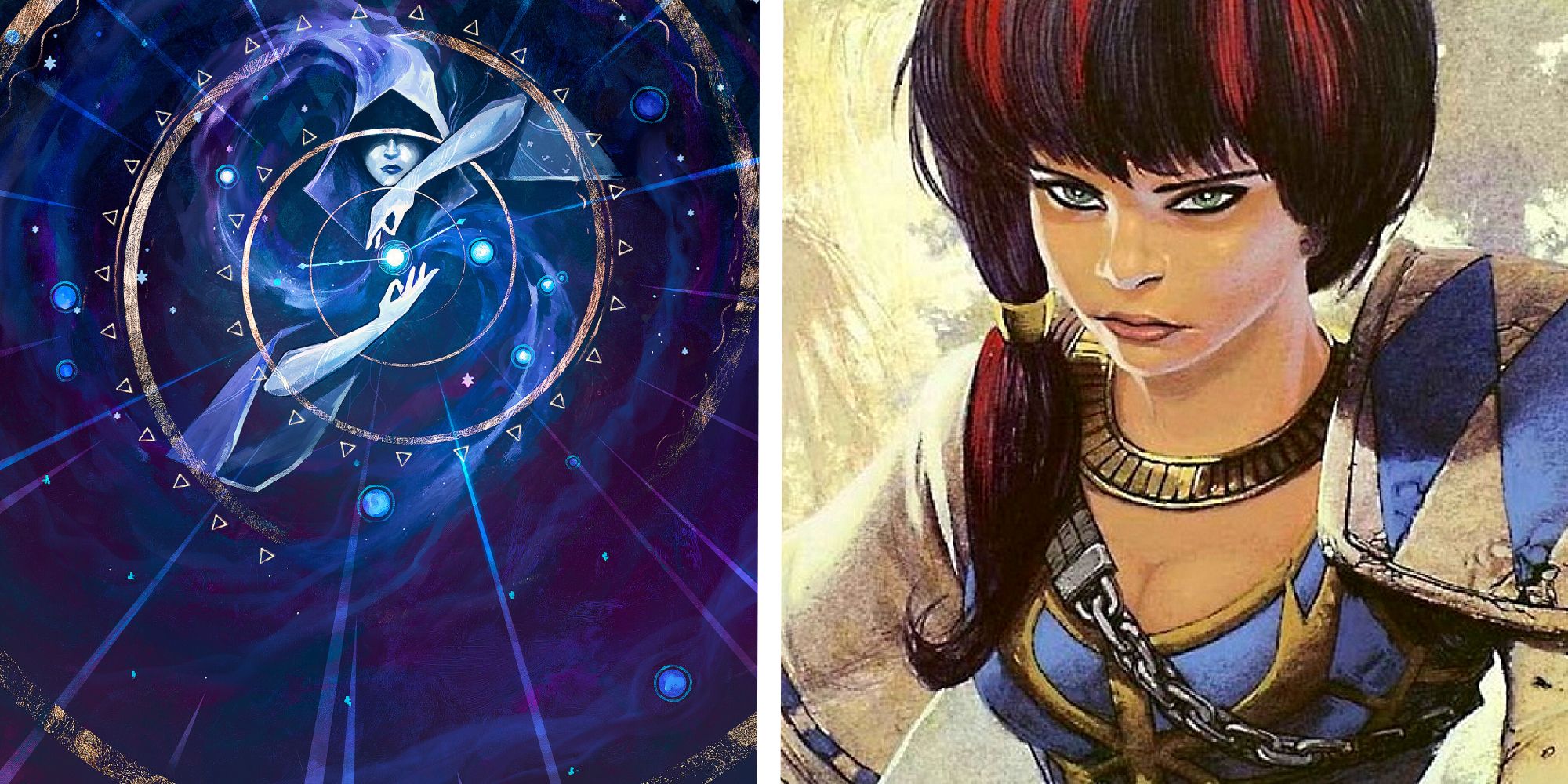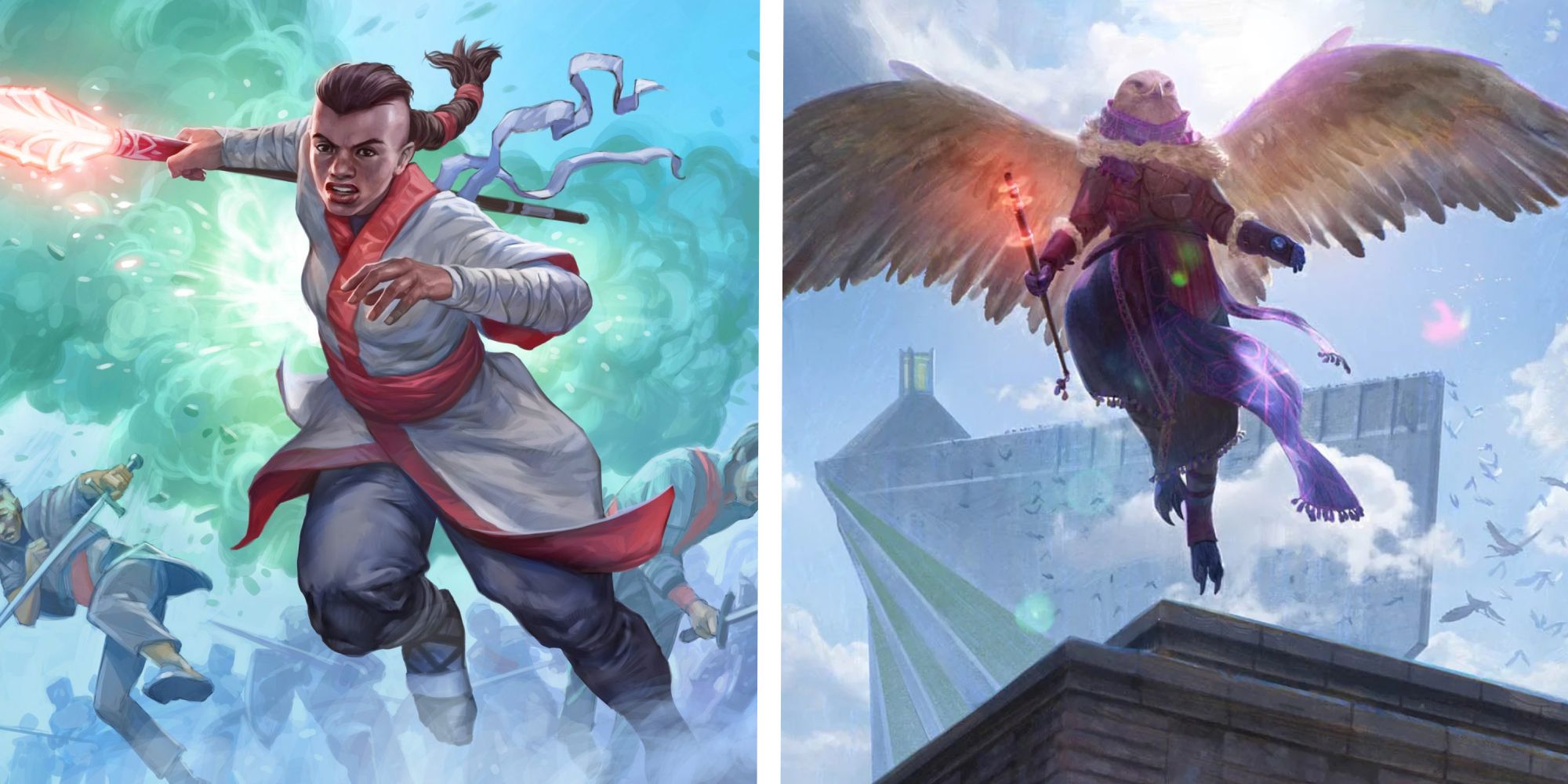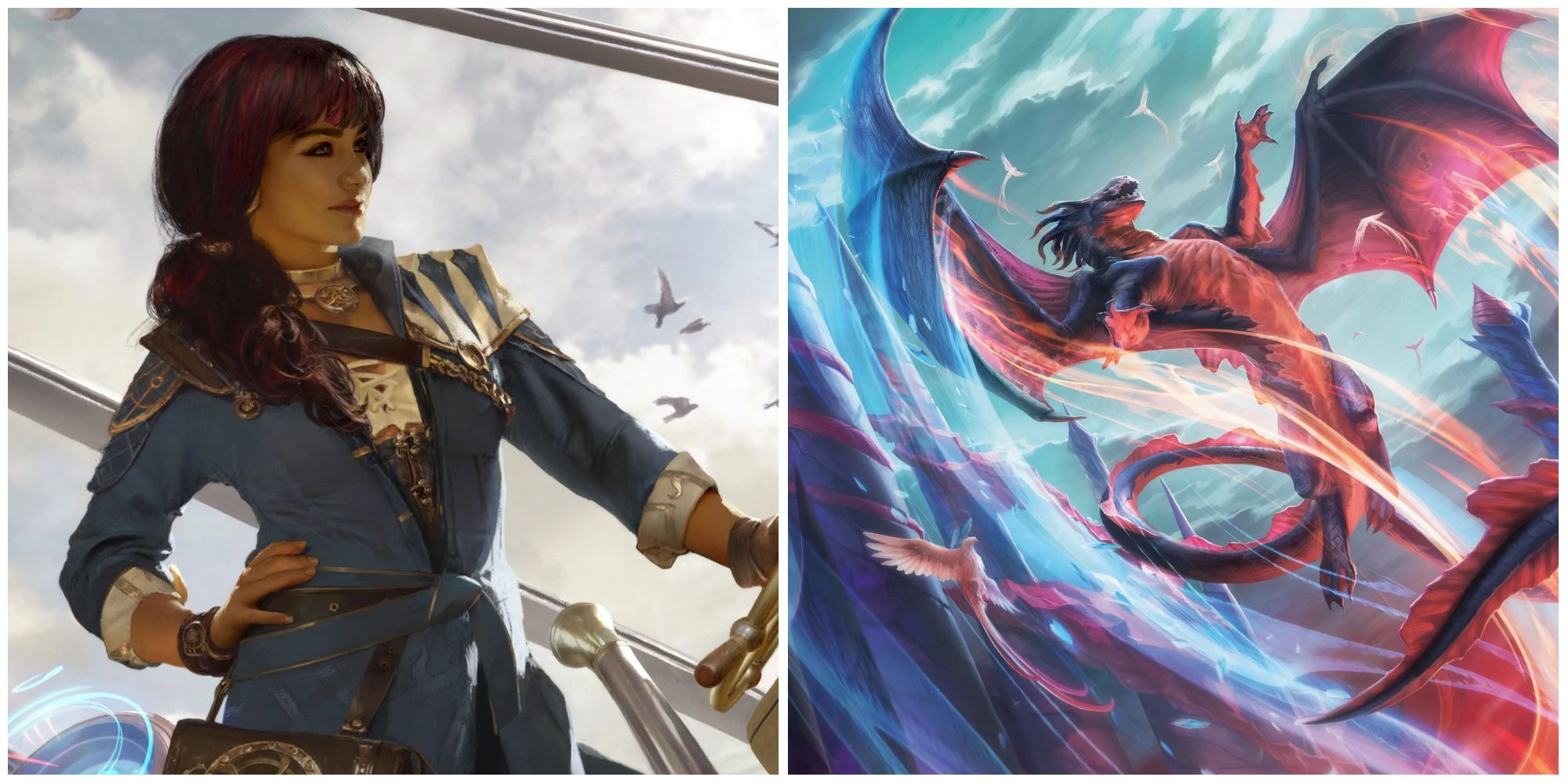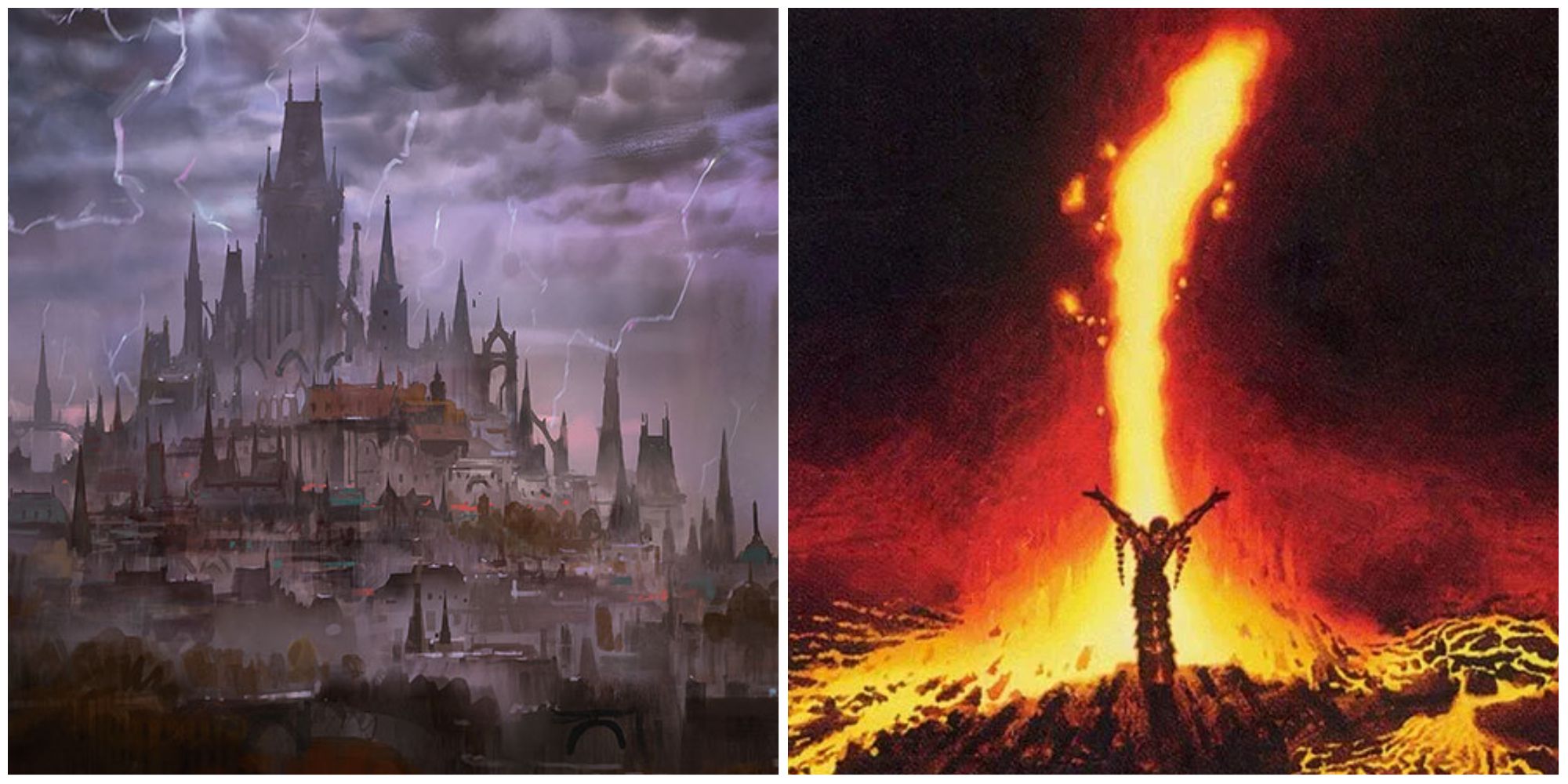Magic: The Gathering is filled with all sorts of color pairings, each with its own play styles and archetypes within them. Izzet (red/blue) is one of the more popular ones, seeing play across multiple formats such as Historic and Modern, and generally all with a vastly different style.
Izzet is often the color of spells, with many powerful low-mana instants and sorceries that can be cast as soon as the game starts. Since they're so easy to cast, it allows for the spells to be cast back to back, which can help push your card advantage, board state, and combo potential.
Updated September 12, 2023 by Ryan Hay: There are always new and exciting decks to build, especially in the red and blue guild color, Izzet. Some of the more exciting deck archetypes are often very one-sided, giving you all the options in the match while denying your opponents cards, resources, and turns. Three well-established archetypes are added to this list this time around, the all-knowing Wizards, spell-slinging Prowess, and the time-bending Extra Turns archetypes.
13 Draw-Discard
Drawing and discarding cards is one of Izzet's biggest strengths. There is no shortage of cards that can do this, such as Faithless Looting, Careful Study, and Izzet Charm. Blue is the color that has access to the most cards that can draw for no cost, and when mixed with red, which has plenty of ones that draw and discard cards, you have a fantastic archetype to play with.
There are plenty of cards in Izzet that benefit from drawing cards such as The Locus God, which has plenty of ways to create infinite combos in Commander. Haughty Djinn will want you to be loading up cards into your graveyard, and drawing and discarding them can help keep your hand fresh with interaction.
Sample Decks: The Locus God Commander, Mono-Blue Tempo
12 Coin Flipping
Coin flipping is a unique archetype for Izzet that is generally only in Commander. There are a handful of commanders that care about coin-flipping, such as Okaun, Eye Of Chaos/Zndrsplt, Eye Of Wisdom, and Krak, the Thumbless/Sakashima Of A Thousand Faces.
Coin-flipping decks have multiple ways to go about building them. You can combo with it, making infinite copies of a card by purposefully failing coin flips, or cause a hectic game state that makes it hard to keep up with what's going on. There are even ways to win instantly with something like Chance Encounter, which lets you win the game after you flip ten coins after you've cast it.
Sample Decks: Krak, The Thumbless/Sakashima Commander, Yusri, Fortune's Flame Commander
11 Wizards
One of the oldest creature types in Magic, Wizards are well-established as a very strong archetype across multiple formats. Depending on the format, Wizards decks can be strong in Limited formats like Draft and Sealed but have fallen off as an archetype in most Constructed formats.
But that's not to say there aren't some powerful Wizard cards out there. Storm-Kiln Artist turns your spells into mana by producing Treasure Tokens, while the classic Young Pyromancer creates a 1/1 creature for each spell you cast.
Between spell-slinging commanders like Adeliz, the Cinder Wind and Vadrik, Astral Archmage, and Veyran, Voice of Duality, which copies your cast triggers, there are tons of ways to build this archetype to make it feel unique.
Sample Decks: Niv-Mizzet, Parun Commander and Arjun, the Shifting Flame Commander
10 Treasure
Treasure decks have gotten progressively stronger, and that's largely thanks to how many red cards can create them. Cards such as Big Score, Unexpected Windfall, and Goldspan Dragon all can create a ton of Treasure tokens while providing you with value.
The blue side of Izzet Treasure decks allows you to take advantage of the ramp Treasure provides to cast all your blue spells since that color normally is rather bad at ramping. Izzet has a lot of powerful cards that cost a lot of mana, and the Treasure can help you cast them easily.
Sample Decks: Galazeth Prismari Commander, Izzet Goldspan Dragon Storm
9 Polymorph
Polymorph is an archetype built around sacrificing small creatures and trading them off for much stronger, more threatening ones. Named after the Polymorph card, the strategy can be a bit inconsistent due to its randomness of it. A proper deck can guarantee you hit nothing but strong creatures.
Polymorph effects will get rid of a creature on your battlefield and make you reveal cards from the top of your deck until you reveal a creature that can replace it, putting it on the battlefield. The best way to build a Polymorph deck is to only include token generators, ensuring you won't hit a weak creature from your Polymorph trigger. Popular cards in the Polymorph archetype include Polymorph, Transmogrify, and Indomitable Creativity.
Sample Decks: Neera, Wild Mage Commander, The Locust God Commander
8 Wheels
Wheels is an archetype that wants to force everyone to discard their hands to draw a new one. While giving your opponents a fresh hand seems like it could be bad, in the proper decks, it's the opposite. Cards like Narset, Parter of Veils, and Hullbreacher (in formats that it's legal in) prevent your opponents from getting a new hand at all while you get a refresh.
The Wheel archetype has plenty of creatures with effects that trigger when you draw a card. Often, they are not once per turn, meaning when you draw a full hand, you get plenty of effects going off. Popular Wheel cards are Windfall, Wheel Of Fate, and Niv-Mizzet, Parun.
Sample Decks: Niv-Mizzet, Parun Commander, Rielle, The Everwise Commander
7 Delver
Delver is a unique archetype, based heavily on instant and sorcery cards. The name derives from both Delver Of Secrets and the Delve ability. The archetype has seen success in multiple formats, including Legacy and Modern. The spells typically only cost one or two mana, allowing you to maintain tempo while building up your creature's stats.
Creature payoffs include Murktide Regent and Dragon's Rage Channeler, with small spells including Expressive Iteration and Lightning Bolt. Delver is a tempo archetype, meaning you want to put a creature on the battlefield that progressively gets stronger while keeping control of the game stat with your spell lineup.
Sample Decks: Izzet Murktide, Izzet Delver
6 Spellslinger
Spellslinger is an Izzet staple based around casting as many spells as possible. Often, these cast little and in some cases, no mana to do so. The primary goal for this is to trigger effects that activate when you cast a spell. With the addition of Magecraft in Strixhaven, Spellslinger got even better thanks to the new ability built around it.
Spellslinger mixes in burn with it with cards like Guttersnipe and Thermo-Alchemist. Many of the creatures found in the Spellslinger archetype will make tokens when you cast a spell, such as Young Pyromancer and Talrand, Sky Summoner. These decks regularly play a lot of draw spells to make sure you always have cards to cast in your hand, as running out of fuel for your strategy can be common if you're not careful.
Sample Decks: Izzet Burn, Izzet Phoenix
5 Spell Copy
One of the things Izzet excels most at is copying spells. Most of the cards that do so are in Izzet colors, making it one of the most popular Izzet archetypes. Izzet has access to some very powerful spells, so being able to copy them easily is very much appreciated, and often can end games.
Most extra turn spells are in Izzet colors, and copying them allows you to essentially take enough extra turns to win the game easily. Copy spells are trivial to get onto the battlefield in Izzet, with cards like Arcane Bombardment, Thousand-Year Storm, and Swarm Intelligence all enabling spell copy strategies easily and quickly, turning the tide of a game in your favor.
Sample Decks: Izzet Bombardment, Izzet Extra Turns
4 Extra Turns
Speaking of Extra Turns, this is a strong enough archetype that it deserves its own category. The entire focus of these decks is to take as many turns as humanly (or magically) possible through a combination of copy spells, ability triggers, and recurring cards from the graveyard. In the meantime, you are likely playing a hard control list, with plenty of spells to keep the board clear and counterspells in hand to stop any of your opponent's shenanigans.
One of the best commanders for this style of deck is Jhoira of the Ghitu, which let you spend two generic mana to give it suspend and put four counters on it, removing a counter at the start of each of your turns, casting it when you finally remove the last counter. Once you have a good number of turns stocked up, you can chain turn cards together to ensure you are always playing and no one else can.
Sample Decks: Jhoira of the Ghitu Commander, Neera, Wild Mage Commander
3 Prowess
Oftentimes a mix of spell slinger, control, and creature strategies, Prowess decks take small creatures and give them a stat boost every time you cast a spell. A creature with prowess gets a temporary +1/+1 boost to their stats anytime you cast a noncreature spell, so instants, sorceries, Planeswalkers, and more.
Cantrips, spells that are generally cheap to cast and replace themselves by drawing a card, are the bread and butter of these decks, both giving you more cards to potentially cast and providing a buff to your creatures.
Sample Decks: Legacy Burn, Balmor, Battlemage Captain Commander
2 Artifacts
Artifacts is an archetype in many colors, but Izzet supports them in more unique ways. In some strategies, Artifact decks will want to cheat big artifacts onto the battlefield with a card like Jhoira, Ageless Innovator. In other ways, they help you push card and board advantage, giving artifacts extra effects such as drawing a card with Jhoira, Weatherlight Captain or helping them cast spells without sacrificing them with Galazeth Prismari.
Artifacts include artifact creatures, for which there is no shortage of powerful ones to play. There are many permanents in Izzet colors that keep your artifacts safe, like Padeem, Consul of Innovation. There are plenty of permanents to discount artifacts as well, such as Enthusiastic Mechanaut and Foundry Inspector, allowing for an artifact strategy to be even more powerful compared to other color combinations.
Sample Decks: Jhoira, Ageless Innovator Commander, Izzet Saheeli (Filigree Master)
1 Storm
Storm is one of the most popular archetypes when it comes to Izzet, and what it excels the most at. Storm decks are built around casting as many spells as possible. You can use one of the cards with storm to cast multiple copies of it, often to win a game. Many cards in the Storm archetype add mana to your mana pool, either positive or even with cards like Seething Song, Rite Of Flame, and Mana Geyser. Storm payoffs include Mind's Desire, Grapeshot, and Thousand-Year Storm.
There are many other ways to break even in mana and continuously loop them, making your storm count infinite to easily go through your entire deck and win the game in just one turn. Storm decks often are quiet for most of the game until they are ready to cast a ton of spells, leading to unexpected, but swift victories. Izzet supports the strategy the most, making it one of the most iconic archetypes for the color pairing.
Sample Decks: Izzet Storm, Lier Treasure Storm

